The world-famous Pashmina is loved and coveted by all. Is it possible that the luxurious Pashmina, known for its unparalleled softness and warmth, could be illegal? Why do people ask "Why is Pashmina Illegal?" For centuries, people have celebrated it as the epitome of elegance and sophistication, coveted by royalty and fashion enthusiasts alike. This luxurious fabric, often draped over the shoulders of the wealthy and influential, carries with it a legacy of craftsmanship. It spans generations. However, beneath its smooth texture and cultural significance lies a tangled web of legal challenges and controversies. These have cast a shadow over its once-untouchable status.
While Pashmina is undeniably a symbol of luxury, it has also become the subject of intense legal scrutiny. The global demand for authentic products has led to a surge in counterfeit products, confusing consumers and regulators alike. At the same time, ethical concerns related to the treatment of animals and environmental sustainability have further complicated its production and trade. Adding to the complexity is the confusion between Pashmina and Shahtoosh. We know Shahtoosh is illegal due to its association with the endangered Tibetan antelope. These issues have contributed to a perception that Pashmina itself may be illegal. Hence, it has raised questions about the future of this revered fabric in international markets.
The purpose of this blog is to delve into the reasons behind the legal challenges surrounding Pashmina. We will explore the historical background of Pashmina, tracing its journey from the Himalayan regions to the global fashion scene. We will examine the specific legal issues that have arisen, including the impact of wildlife protection laws, the rise of counterfeit products, and the ethical dilemmas associated with Pashmina production.
Historical Background of Pashmina
Pashmina, often referred to as the "soft gold" of the Himalayas, has a rich history. It is deeply intertwined with the culture and traditions of Kashmir and Ladakh. The luxurious Cashmere, renowned for its unparalleled softness and warmth, has been a symbol of elegance and sophistication for centuries. Hence, Pashmina carries with it a legacy of craftsmanship that has come down through generations.
The Origin
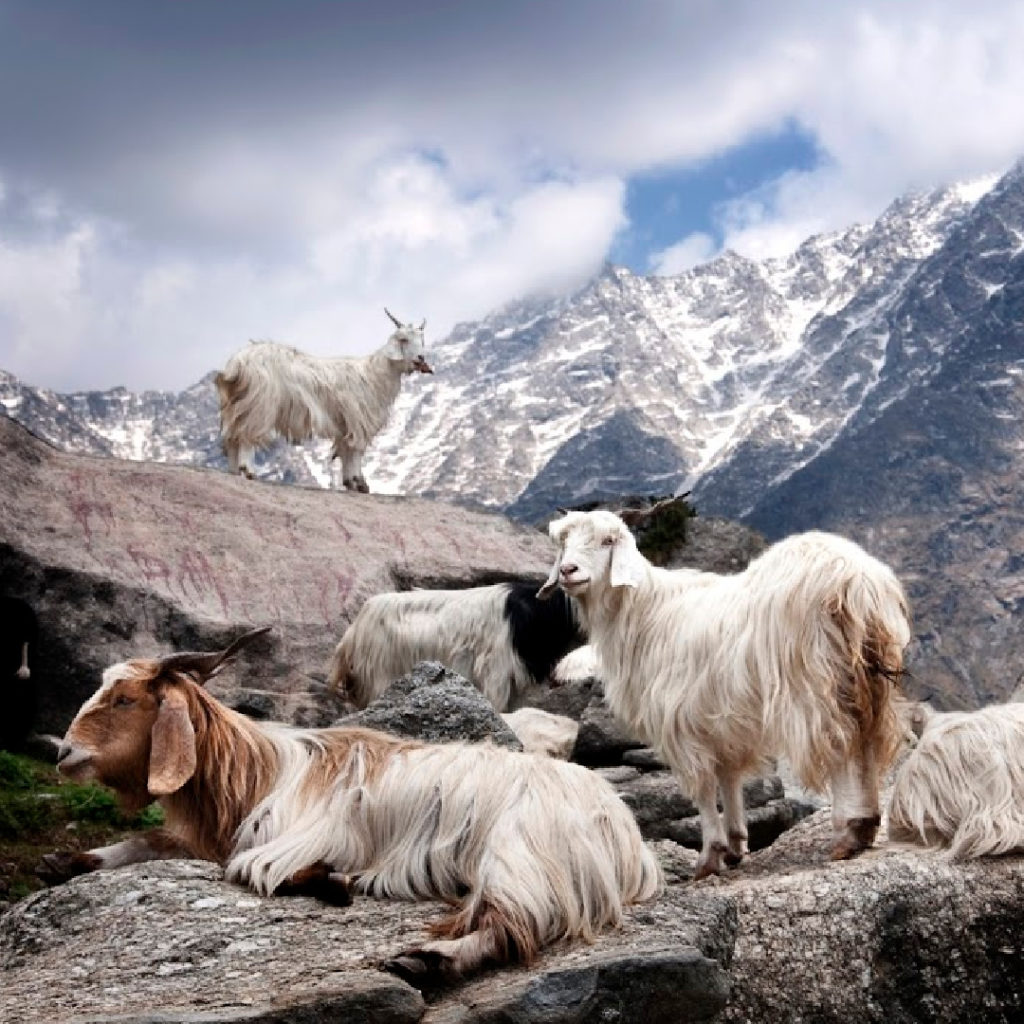
Before knowing the answer to the question "Why is Pashmina illegal?", we need to find out the history. The story begins in the remote, high-altitude regions of the Himalayas, particularly in Kashmir and Ladakh. The word "Pashmina" comes from the Persian word "Pashm," which means "soft gold" or "wool". It is the art of converting raw Cashmere wool into luxury shawls, scarves, and wraps. Cashmere comes from the fine undercoat of the Changthangi goat. This breed is native to the cold, harsh climates of the Himalayas. These goats, adapted to survive in extreme conditions, produce an exceptionally fine and warm wool to protect themselves from the freezing temperatures.
Artisans have handcrafted Pashmina shawls in Kashmir for centuries. Its origins date back to the 15th century. During this period, the craft of Pashmina weaving was brought to Kashmir by skilled artisans from Central Asia. It was the then ruler Zain-ul-Abidin, who invited them. The local weavers of Kashmir quickly adopted and perfected this craft. They transformed Cashmere into products of unmatched quality and beauty. Over time, it became an integral part of Kashmiri culture. It symbolized not only wealth and status but also the region's artistic heritage.
Traditional Production Methods
The production of Pashmina is a labor-intensive process that requires a high level of skill and craftsmanship. The process begins with the careful collection of the fine undercoat wool from the Changthangi goats. This wool, often called "Cashmere," is collected by hand-combing the goats during the molting season. The process ensures that the animals remain unharmed. Herders then meticulously clean the raw wool to remove impurities, a process that requires patience and expertise.
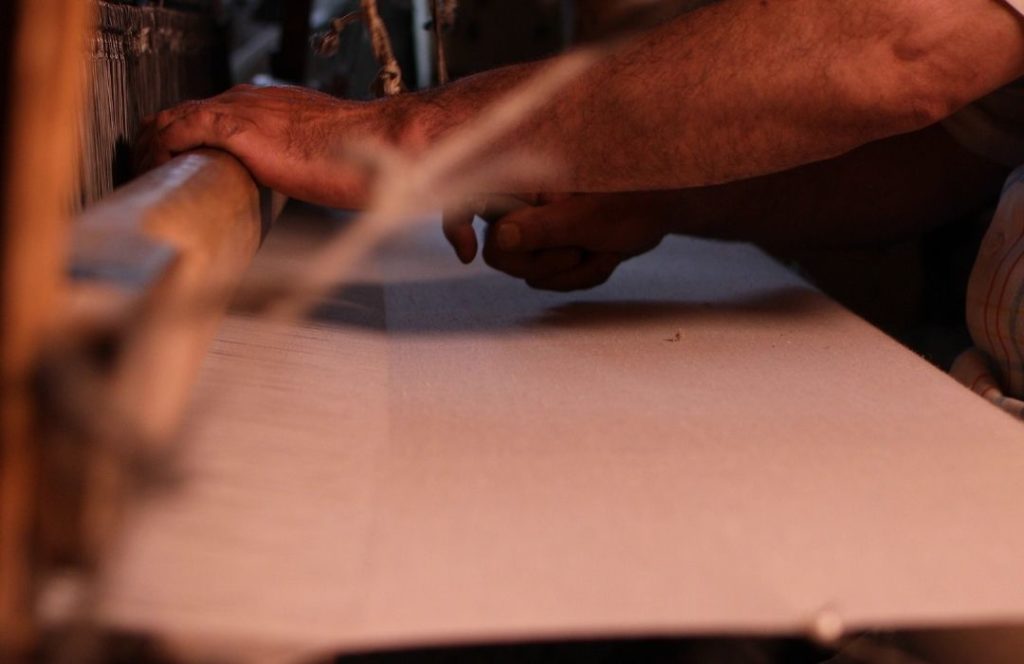
Once the wool is cleaned, it is spun into fine threads using a traditional spinning wheel known as a "charkha". This hand-spinning process is delicate and time-consuming. This is because the threads must be spun to a precise fineness to ensure the softness and quality of the final product. The spun threads are then woven into fabric on handlooms by skilled artisans. The weaving process, which can take weeks or even months depending on the complexity of the design, is an art form in itself. It requires a deep understanding of the material and the intricacies of the patterns.
The final step in the traditional production involves the finishing touches. These may include hand embroidery or intricate designs. Each piece is a testament to the craftsmanship and dedication of the artisans. It is them who pour their skill and creativity into every thread.
Pashmina's Global Recognition
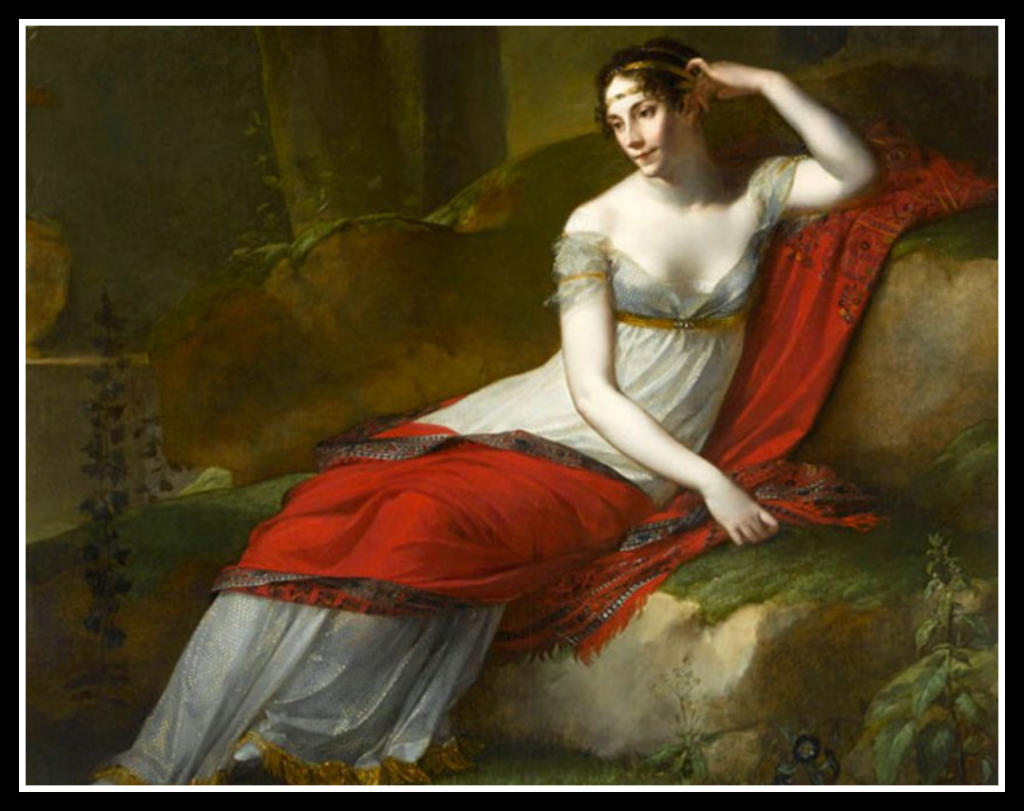
Over the centuries, Pashmina gained widespread recognition and became a global symbol of luxury. The fabric's softness, warmth, and exquisite craftsmanship made it highly sought after by royalty and the elite across the world. Those shawls captivated European travelers and traders who visited Kashmir in the 18th and 19th centuries. This led them to introduce it in European fashion circles. It quickly became a status symbol in Europe. Only the aristocrats and royalty wore Pashmina shawls. This included Napoleon Bonaparte's wife, Josephine, who had an extensive collection of Pashmina shawls.
In modern times, Pashmina has retained its status as a luxury item. It continues to be a favorite among fashion designers and enthusiasts. Its global recognition is a testament to its enduring appeal and the timeless quality that it represents. Today, it is not just an art form. It is a cultural treasure that embodies the rich heritage of Kashmir and Ladakh, admired and cherished by people around the world.
The Legal Issues Surrounding Pashmina
Pashmina, revered for its softness and warmth, has faced numerous legal challenges and misconceptions over the years. Despite its luxurious reputation, several factors have led to confusion and misunderstanding regarding its legality. As more and more people ask the question "Why is Pashmina illegal?", we need to find answers. It is important to clarify from the outset: authentic Pashmina is not illegal. The legal issues surrounding Pashmina often stem from misunderstandings, associations with other illegal products, and the proliferation of counterfeit goods.
Misconceptions and Confusions
One of the most prevalent misconceptions about Pashmina is its association with illegal practices. This confusion often arises from a lack of understanding about the differences between Pashmina and other similar products. While Cashmere itself is a legal and ethically produced fabric, some mistakenly link it to banned items. This leads to unnecessary concerns about its legality.

Pashmina is made from the fine undercoat Cashmere wool of the Changthangi goat. The goat is native to the Himalayan regions of Kashmir and Ladakh. Herders collect the wool in a manner that does not harm the animals. Hence, the entire production process adheres to ethical standards. However, the high demand for Pashmina has led to a market flooded with counterfeit products. This has further muddied the waters. These fakes, often made from synthetic materials or lower-quality wools, have contributed to the misconception that it is illegal or associated with unethical practices.
CITES and Wildlife Protection Laws
The Convention on International Trade in Endangered Species of Wild Fauna and Flora (CITES) plays a significant role in regulating the trade of animal products, particularly those derived from endangered species. CITES ensures that international trade in wildlife does not threaten their survival. Pashmina itself doesn't come from endangered animals and is not regulated by CITES. However, the convention's guidelines and regulations have indirectly impacted Pashmina's market due to confusion with other products.
The most significant impact has come from the association of Pashmina with Shahtoosh. Shahtoosh is a highly controversial fabric. Artisans craft it from the wool of the endangered Tibetan antelope, also known as the chiru. Shahtoosh is banned under CITES regulations. The production of this fabric involves killing the chiru, the Tibetan antelope, a species protected under international law. Due to the similarities in their luxurious qualities, few mistake it with Pashmina. This leads to legal scrutiny and misunderstandings about its legality.
Why is Pashmina Illegal?: The Shahtoosh Controversy
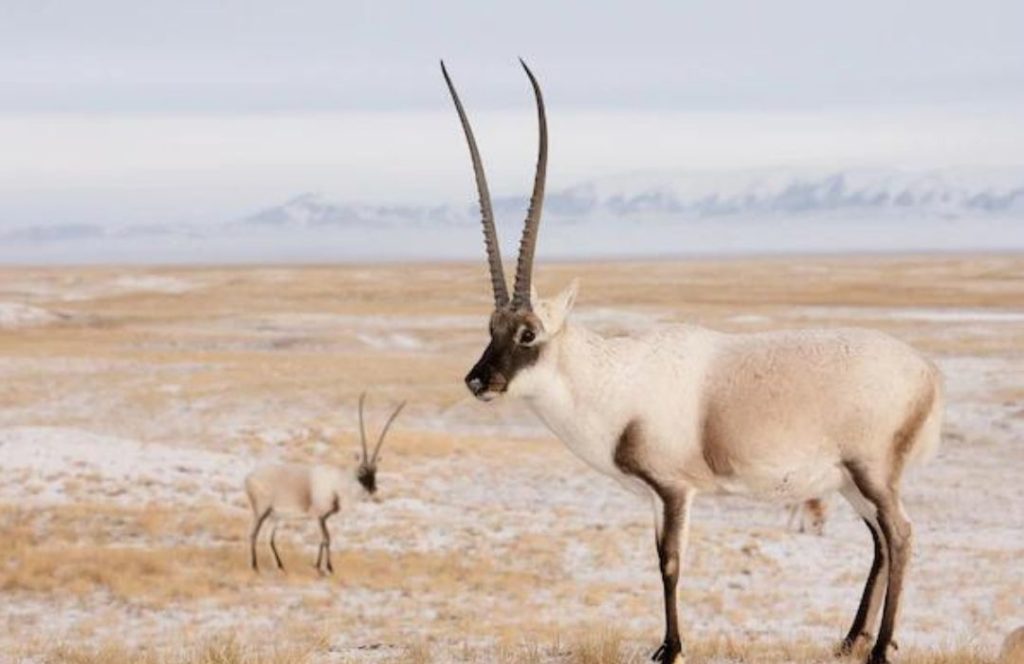
The Shahtoosh controversy is central to the legal challenges faced by Pashmina. Shahtoosh, unlike Pashmina, is illegal due to its association with the endangered Tibetan antelope. The confusion between these two fabrics has caused significant problems for Pashmina producers and sellers.
Shahtoosh is one of the finest and most expensive wools in the world, but there is a ban on its production to protect the Tibetan antelope from extinction. Unfortunately, due to their similar textures and high market value, some confuse Pashmina with Shahtoosh. This confusion has led to a general wariness among consumers and authorities alike. Some even mistakenly believe that all luxury wools from the region are illegal.
To clarify, authentic Pashmina is entirely legal and artisans produce it without harming any endangered species. Cashmere comes from domesticated goats. The goats are not an endangered species, and the process is sustainable. However, the persistent confusion between Pashmina and Shahtoosh has resulted in increased legal scrutiny of Pashmina products. This is particularly in international markets where authorities are vigilant about enforcing wildlife protection laws.
Impact of Counterfeit Pashmina
Another significant factor contributing to the legal challenges is the widespread presence of counterfeit products. The high demand has led to a proliferation of fakes. These often sell at a fraction of the price of genuine product. These counterfeit items, typically made from synthetic fibers or inferior wool blends, are not only misleading to consumers but also detrimental to the reputation.
The market confusion caused by counterfeit Pashmina has led to increased legal oversight and stricter regulations in some regions. Authorities have become more vigilant in inspecting Pashmina products. This ensures that products are not mislabeled or fraudulent. This increased scrutiny, while necessary to protect consumers and maintain market integrity, has also contributed to the misconception that Pashmina itself is illegal or problematic.
While authentic Pashmina is not illegal, it has become entangled in legal challenges. This is due to misconceptions, its association with the banned Shahtoosh, and the widespread issue of counterfeit products. By understanding these factors, consumers and authorities can better navigate the complexities of the market. They can also support the continued production of this culturally significant and legally permissible fabric.
Why Pashmina Faces Legal Challenges?
Pashmina, revered for its luxurious texture and cultural heritage, has faced a variety of legal challenges over the years. These challenges stem from a complex web of ethical, environmental, economic, and international trade issues that have made the production, sale, and export more difficult. Understanding these factors is essential to appreciating why Pashmina, despite its cultural and economic importance, continues to face scrutiny and regulatory challenges.
Ethical Concerns
One of the primary reasons Pashmina faces legal challenges is due to ethical concerns surrounding the treatment of the Changthangi goats. Artisans use the Changthangi goats' wool to produce this luxurious fabric. These goats are native to the high-altitude regions of Ladakh and Tibet. Here, they have adapted to survive in extremely harsh climates. The fine undercoat wool, known as Pashm, is what makes Pashmina so soft and warm. However, people have raised concerns about the humane treatment of these animals, particularly in the context of increasing demand for Pashmina.
Ethical issues arise from the methods used to harvest Pashm. Traditionally, herders collect the wool by hand-combing the goats during their molting season. It is a process that does not harm the animals. However, as the demand for Pashmina has grown, there has been concern that some producers may resort to less humane practices to increase yield. These practices can be shearing the goats prematurely or resorting to ways that cause distress. Such practices can lead to suffering and health problems for the goats, raising serious animal welfare concerns.
Moreover, there is growing awareness and consumer demand for ethical and sustainable products. Consumers increasingly concern themselves with the welfare of animals involved in the production of luxury goods. This leads to calls for stricter regulations and certifications to ensure that Pashmina is produced humanely. While many traditional producers continue to use ethical methods, the possibility of unethical practices in some areas has led to increased scrutiny and legal challenges.
Environmental Impact
Environmental considerations also play a significant role in the legal challenges faced by Pashmina. The production of Cashmere wool is intricately linked to the fragile ecosystem of the Himalayan region. Note that it is the Himalayan region that houses the Changthangi goats. The increasing demand has led to concerns about overgrazing, habitat degradation, and the broader environmental impact of goat herding on this delicate environment.
Overgrazing by large herds of Changthangi goats can lead to the depletion of vegetation and soil erosion, which in turn can have a cascading effect on the local ecosystem. The Himalayan region is famous for its biodiversity, and the degradation of its pastures can threaten not only plant species but also other wildlife that depends on this environment. As a result, there is a growing movement to implement sustainable herding practices that minimize the environmental impact of Pashmina production.
In response to these concerns, some regions have introduced regulations aimed at controlling the size of goat herds and promoting sustainable grazing practices. These regulations, while necessary to protect the environment, can also pose challenges for Pashmina producers, particularly small-scale herders who may struggle to comply with new rules. The tension between the need for environmental protection and the economic viability of production has contributed to the legal complexities surrounding this industry.
Economic and Social Factors
The production of Pashmina is not just a business; it is a way of life for many communities in Kashmir and Ladakh. For centuries, the craft of Pashmina weaving has been passed down through generations, forming an essential part of the cultural and economic fabric of these regions. However, the legal challenges associated with Pashmina have significant economic and social implications for the local artisans and herders who depend on this industry for their livelihoods.
One of the key economic issues is the vulnerability of Pashmina producers to market fluctuations and legal uncertainties. Small-scale artisans and herders often lack the resources and infrastructure to navigate complex legal requirements, particularly when it comes to export regulations and certifications. This can limit their access to international markets, reducing their income and threatening the sustainability of their craft.
Moreover, the prevalence of counterfeit Pashmina products in the market has further undermined the economic stability of authentic Pashmina producers. Fake Pashmina, often made from inferior materials, is sold at a fraction of the price of genuine Pashmina, misleading consumers and devaluing the real product. This has led to calls for stronger legal protections and certifications to distinguish authentic Pashmina from counterfeits. However, implementing these measures can be costly and time-consuming for small producers, adding to their economic burden.
Socially, the decline of the industry due to legal challenges can have devastating effects on local communities. In many cases, entire villages depend on Pashmina production for their survival. The loss of this income can lead to poverty, migration, and the erosion of traditional skills and cultural heritage. Legal restrictions that limit the production or export of Pashmina, even if well-intentioned, can therefore have unintended consequences for the social fabric of these communities.
International Trade Restrictions
International trade restrictions are another significant factor contributing to the legal challenges faced by Pashmina. The global nature of the luxury market means that producers must navigate a complex web of regulations, customs laws, and trade agreements to export their products. These regulations are often designed to protect consumers and ensure that products are ethically and sustainably produced, but they can also create significant barriers for Pashmina exporters.
One of the main challenges is the requirement for certifications and documentation to prove the authenticity and origin of the products. For instance, in Kashmir, Pashmina must be accompanied by a Geographical Indication (GI) tag, which certifies that it comes from a specific region and meets certain quality standards. While these certifications help to protect the reputation, obtaining them can be a complex and costly process, particularly for small-scale producers.
Customs laws and import regulations in different countries can also pose challenges for exporters. In some cases, stringent import restrictions are placed on animal products, including wool, due to concerns about diseases or unethical practices. These restrictions can delay shipments, increase costs, and limit market access for Pashmina producers. Furthermore, the confusion between Pashmina and Shahtoosh has led to additional scrutiny at customs, with some shipments being wrongly seized or delayed.
Trade agreements between countries can also affect the Pashmina market. For example, changes in trade tariffs or the imposition of sanctions can disrupt the flow of Pashmina products to key markets. These uncertainties make it difficult for producers to plan and invest in their businesses, adding to the overall legal challenges they face.
Clarifying the Legal Status
Understanding the legal status of Pashmina requires distinguishing between genuine Pashmina and illegal items like Shahtoosh. Authentic Cashmere, derived from the fine undercoat of the Changthangi goat in the Himalayan regions, is entirely legal. Artisans ethically produce Pashmina without harming the animals, making it a valued and lawful luxury product. However, confusion arises when people mistakenly associate Pashmina with Shahtoosh, an illegal fabric made from the wool of the endangered Tibetan antelope. Unlike Pashmina, Shahtoosh production involves killing the antelope, which has led to a global ban on its trade under wildlife protection laws. Thus, while Pashmina remains legal and treasured, Shahtoosh is strictly illegal. Understanding "Why is Pashmina Illegal?" involves recognizing that it is not Pashmina itself but rather the confusion with illegal items like Shahtoosh that raises concerns.
To ensure you purchase legal, ethically sourced Pashmina, take several steps. First, buy Pashmina from reputable sellers who can verify the authenticity of their products. Look for detailed information about the origin of the Pashmina and the production process. Avoid deals that seem too good to be true, as these often involve counterfeit or lower-quality materials. Asking about the sourcing of the wool and the ethical practices of the artisans involved can also help confirm that the product aligns with your values. These precautions prevent you from inadvertently purchasing illegal or unethical items.

Certifications play a crucial role in authenticating legal Pashmina. One of the most important certifications is the Geographical Indication (GI) tag, which identifies products that originate from a specific region and meet established quality standards. The GI tag for Pashmina confirms that the product comes from the recognized regions of Kashmir and Ladakh, where traditional methods produce the highest quality.
Also read: Challenges Faced by Pashmina Enthusiasts
Conclusion
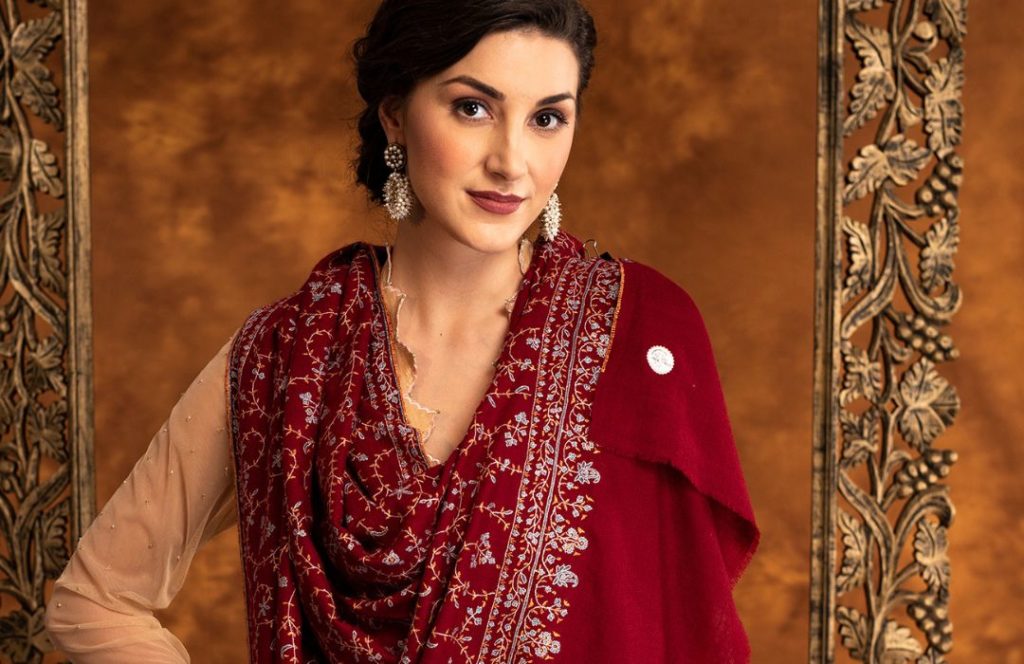
In this blog, we explored the question, "Why is Pashmina illegal?" and clarified that while Pashmina itself is not illegal, it faces legal challenges due to misconceptions and associations with illegal items like Shahtoosh. We discussed the ethical concerns surrounding the treatment of Changthangi goats, the environmental impact of overgrazing in the Himalayan region, and the economic challenges faced by local artisans. Additionally, we examined the complexities of international trade restrictions and the importance of certifications like the Geographical Indication (GI) tag in authenticating legal Pashmina.
Despite these challenges, it remains a legal and culturally significant fabric. The confusion between Pashmina and Shahtoosh has contributed to the legal scrutiny, but efforts are being made to preserve the heritage production while ensuring it meets ethical and environmental standards. By supporting legal and certified products, consumers can help protect the livelihoods of artisans and promote sustainable practices in this industry.
Also read: Pashmina – An Arrival of Sustainable Fashion